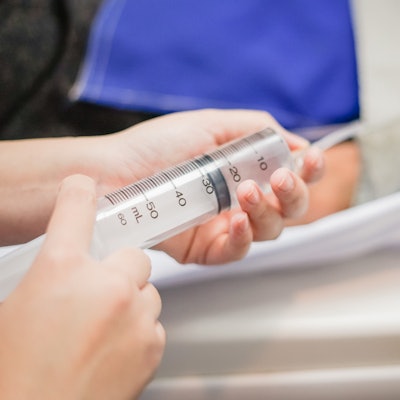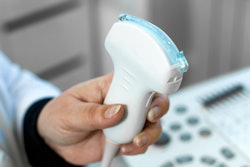
Adverse effects associated with the Lumason/SonoVue-enhanced ultrasound are not dependent on patient demographics or contrast-enhanced ultrasound indications, according to a study published November 7 in Ultrasound in Medicine and Biology.
Instead, it's poor patient health that appears to play a role -- a finding that could help clinicians better manage patients undergoing contrast-enhanced ultrasound, wrote a team led by Qiuyang Li, PhD, from the First Medical Center of the Chinese PLA General Hospital in Beijing, China.
"Significantly less known is the exact frequency of the mild, moderate or severe adverse events [caused by Lumason/SonoVue-enhanced ultrasound], possible association with the indication/examined organ and other patient-related factors such as age, sex and whether patients are hospitalized," the group explained.
The investigators conducted a study to better understand the cause of adverse events that Lumason/SonoVue-enhanced ultrasound has been known to trigger, including flushing, dizziness, headache, mild abdominal pain, pruritus, and nausea. They tracked any correlation with patient demographics and assessed the incidence of mild, moderate, and severe adverse events as well as the time to both onset and resolution of these reactions.
The study included 49,100 patients who underwent Lumason/SonoVue-enhanced ultrasound. Of these, 43 experienced adverse events, 23 of which were mild, 13 of which were moderate, and seven of which were severe. The most common mild adverse responses were dizziness or headache and abdominal pain (which occurred 10 to 15 minutes after contrast injection) while more severe responses included anaphylactic shock, coma, convulsion, and vasovagal reaction (which occurred about a minute after injection). Mild and moderate cases had a resolution time of 30 to 45 minutes, while severe cases often required transferring patients to the emergency department and took up to 12 hours to resolve, the team wrote.
There was no correlation between the incidence of adverse events after Lumason/SonoVue ultrasound and patients' sex and age. But the group did find that inpatients were more likely to experience adverse events than outpatients, which suggests that the sicker a patient is, the more likely it is that they may experience an adverse event, according to Li and colleagues.
However, in general, the investigators concluded that Lumason/Sono Vue-enhanced ultrasound has "a very good safety profile with a low incidence of adverse events, which are often mild."



















